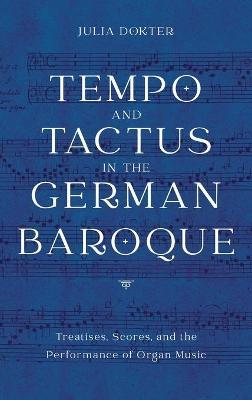Tempo and Tactus in the German Baroque 178 Treatises, Scores, and the Performance of Organ Music
| ISBN(EAN) | 9781648250187 |
| Издатель |
Boydell and Brewer
(сайт издательства) |
| Язык | Английский |
| Формат | Твердый переплет |
| Страницы | 398 |
| Год издания | 2021 |
| Рейтинг | 4.2 |
| Вес (грамм) | 894 |
| Размер (мм) | 229(д) х 152(ш) х 30(в) |
Before the advent of the metronome ca. 1800, there was little in the way of a standardized, commonly accessible method for precisely communicating how fast musical compositions should be performed. Instead of absolute time (e.g., plottable on a metronome), Baroque musicians developed notational cues for relative speed: this was accomplished primarily through combinations of time signatures and note values. Julia Dokter's Tempo and Tactus in the German Baroque helps decode these tempo cues for modern performers.
Part 1 investigates metric theory in music treatises from roughly 1600 to 1790. Parts 2 and 3 explore the organ scores of pivotal composers such as J.S. Bach, Buxtehude, Weckman, and Bruhns, and present case studies demonstrating how Baroque tempo indications may interact in performance situations.
Readers will discover how Baroque musicians modified the Renaissance mensural system to incorporate tempo shifts; how the various duple, triple, and compound meters interrelated; how the technical display of stylus phantasticus writing affected tempo; how tempo words (e.g. allegro) functioned; and how the choice of performing forces (e.g., chorus, solo keyboard, etc.) could affect the way tempo was notated.
Dokter's book will become a basic resource for performers of Baroque music, not only for organ and keyboard solo repertoire, but also for other instruments and ensembles.
Julia Dokter teaches musicology at Georgia State University and organ performance at Agnes Scott College.
Part 1 investigates metric theory in music treatises from roughly 1600 to 1790. Parts 2 and 3 explore the organ scores of pivotal composers such as J.S. Bach, Buxtehude, Weckman, and Bruhns, and present case studies demonstrating how Baroque tempo indications may interact in performance situations.
Readers will discover how Baroque musicians modified the Renaissance mensural system to incorporate tempo shifts; how the various duple, triple, and compound meters interrelated; how the technical display of stylus phantasticus writing affected tempo; how tempo words (e.g. allegro) functioned; and how the choice of performing forces (e.g., chorus, solo keyboard, etc.) could affect the way tempo was notated.
Dokter's book will become a basic resource for performers of Baroque music, not only for organ and keyboard solo repertoire, but also for other instruments and ensembles.
Julia Dokter teaches musicology at Georgia State University and organ performance at Agnes Scott College.
- Комментарии
Загрузка комментариев...

